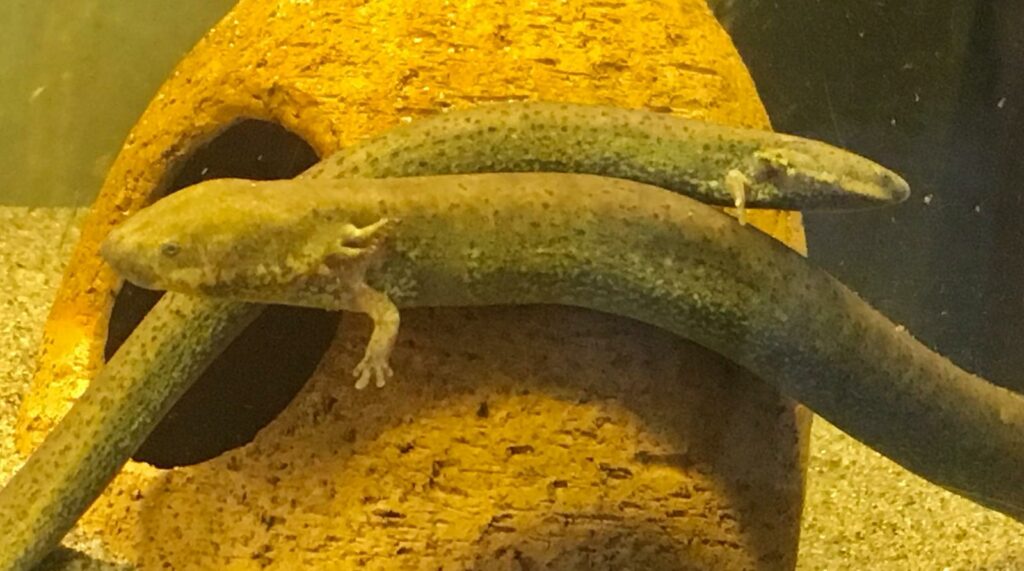Sirenidae

The Sirenidae are a family of neotenic salamanders formed by two genus, Siren (commonly referred to as Sirens) and Pseudobranchus (commonly referred to as Dwarf Sirens). Members of this family do not complete metamorphosis, preserving larval characteristics in adulthood. Their body is slender and eel-like, with external gills and small forelimbs. They completely lack hindlimbs, making them easily distinguishable from other salamanders. These salamanders are found in North America, with the main distribution area being the South East of the United States.
Sirenidae are prevalently nocturnal animals, they inhabit shallow water of swamps and ponds and burrow in the muddy substrate during the day. They also have the ability to create a moisture-retaining seal over their body that allows them to aestivate in mud burrows if the water of their habitat evaporates during the summer.
Another unique feature of this family is that they are the only urodela that feed on plant matter. Early observation of plant matter in the stomach of these animals where dismissed as accidental feeding during the ingestion of invertebrates, but recent observations have confirmed that the animals actively feed on plant matter, with a bacterial flora in their intestine resembling the one of some herbivorous fishes.
Their reproductive strategy has been long debated, but due to the structure of the cloaca, external fertilization has been the most common hypothesis. This has been recently confirmed with observations of Siren Intermedia reproduction. The courtship of this specie includes the male preparing the nesting side, and deposition happens following repeated patterns of circling the nesting area and the male vibrating against the flank and cloaca area of the female. Fertilization is external and once courtship ends, the male protects the eggs. This is unusual for salamanders, but the male viciously protects the eggs attacking any threat, including conspecifics. This behavior is reflected also in the sexual diphormism, with the males being much larger than the females due to larger males being better suited to protect their offspring.
Species List
Genus Pseudobranchus (2 species)
Pseudobranchus axanthus
Pseudobranchus striatus
Genus Siren (4 species)
Siren intermedia
Siren lacertina
Siren reticulata
Siren texana
References
Citation: Hill, R. L., Mendelson III, J. R., & Stabile, J. L. (2015). Direct Observation and Review of Herbivory in Sirenidae (Amphibia: Caudata). Southeastern naturalist, 14(1), N5-N9.
Citation: Reinhard, S., Voitel, S., & Kupfer, A. (2013). External fertilisation and paternal care in the paedomorphic salamander Siren intermedia Barnes, 1826 (Urodela: Sirenidae). Zoologischer Anzeiger-A Journal of Comparative Zoology, 253(1), 1-5.
Citation: LaFortune, T. C. (2015). Species identification and habitat assessment of the South Texas siren (Doctoral dissertation).
Citation: AmphibiaWeb: Information on amphibian biology and conservation. [web application]. 2018. Berkeley, California: AmphibiaWeb. Available: https://amphibiaweb.org/. (Accessed: 2018).
Citation: Larson, Allan. 1996. Sirenidae. Sirens. Version 01 January 1996 (under construction). http://tolweb.org/Sirenidae/15454/1996.01.01 in The Tree of Life Web Project, http://tolweb.org/